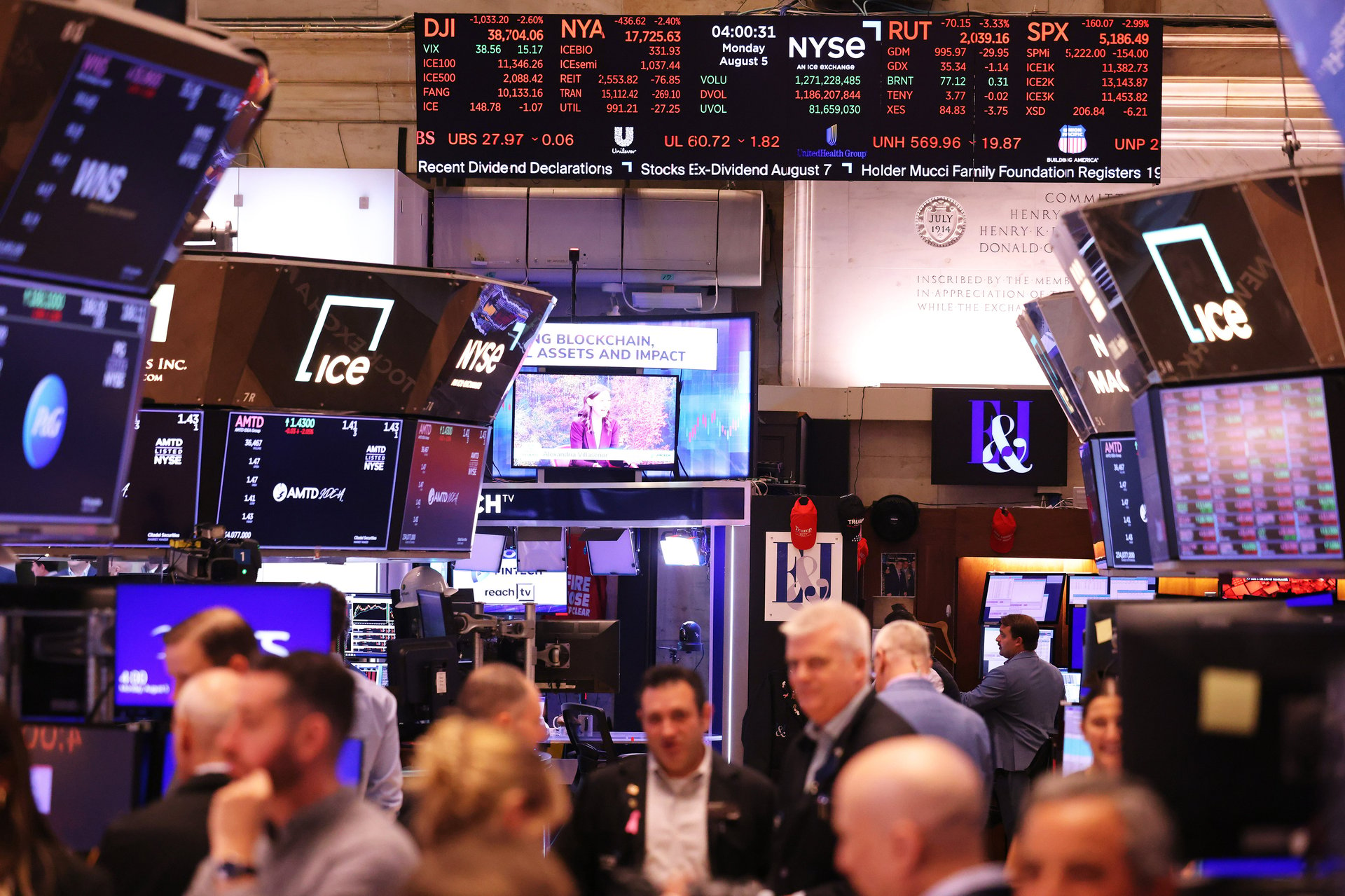Is the market signaling a recession?
After a weak jobs report and global stock chaos, the risk of a downturn is higher

Global stocks fell sharply on Monday, digging up long-buried fears about a potential U.S. recession. Despite a quick correction, an economic downturn is not entirely out of the picture.
Suggested Reading
Wall Street’s “fear index” (the VIX) spiked as investors’ anxieties about the market came to life, starting with a 12% plunge for Japan’s Nikkei 225. The S&P 500 shed $1.3 trillion in one day, the Dow dropped over 1,000 points, and the Nasdaq lost almost 600 points.
The global stock sell-off was spurred by Friday’s weaker-than-expected U.S. jobs report, that saw unemployment tick up to 4.3% — it’s highest level in three years. Meanwhile, employers added just 114,000 jobs in July, falling far short of the 175,000 gain economists polled by FactSet had projected and worrying investors that high interest rates have slowed the economy too much.
At the same time, the Bank of Japan decided to raise its benchmark interest rate, causing the value of the yen to rise and sparking fears of the unwinding of “carry trades.” This is a trading strategy that involves borrowing an undervalued currency, like the yen, and using it to buy higher-returning investments.
Yiming Ma, associate professor in the finance division at Columbia Business School, said the numbers align with Sahm’s rule, which says that a recession starts when the three-month moving average of the unemployment rate is 0.5 percentage points or more above its lowest during the previous 12 months. That suggests that there might be a higher chance of a recession than previously thought.
“Relative to what we thought on Thursday, I think the recession risk has gone up,” Ma said. “But is there 100% going to be a recession? Is 100% going to be a deep recession? I think, not necessarily.”
Other indicators, like consumer spending and corporate earnings, still look good, according to Ma, which suggests that we’re not yet headed into a “super deep and sudden recession.”
Tim Urbanwicz, head of research and investment strategy at Innovator ETFs, said that Monday’s stock moves were “definitely a bit of an overreaction” to the jobs report.
“The economy’s slowing, it’s not falling off a cliff,” he said. “If we see a recession, which is likely, it’s probably going to be pretty shallow.”
A shallow recession is one that helps to cool an overheated economy, like the one we’ve seen over the past year or so in the U.S., without causing lasting damage. That means slightly higher unemployment, slower inflation, and slightly lower yearly GDP growth.
One major concern is that the market sell-off becomes a “self-fulfilling prophecy”: If CEOs cut back on investments and consumers pull back on spending out of fear of a recession, that could bring about a downturn on its own, researchers at Morningstar DBRS wrote.
Some investors may already be fleeing towards safer assets. Goldman Sachs’ Risk Appetite Indicator, which has already been on the decline since early June, fell even farther in intraday trading on Monday. The indicator collapsed to one of its lowest levels since the 1990s intraday, analysts at Goldman wrote in a research note, in large part due to the spike in the VIX.
There’s also a higher risk of a drop in the value of investments and funds within the next three months, as markets are expected to maintain high volumes with a decreased risk appetite among investors, the Goldman analysts said.
Columbia’s Ma said the single-day market moves themselves, although seemingly extreme, were long overdue — and warned that investors and others alike shouldn’t go into panic mode just yet.
“In terms of volatility, in terms of price movements, there’s just not been any kind of adjustment in the stock market,” she said. “And that usually indicates that there’s an adjustment overdue, and I think that adjustment came on Monday.”
